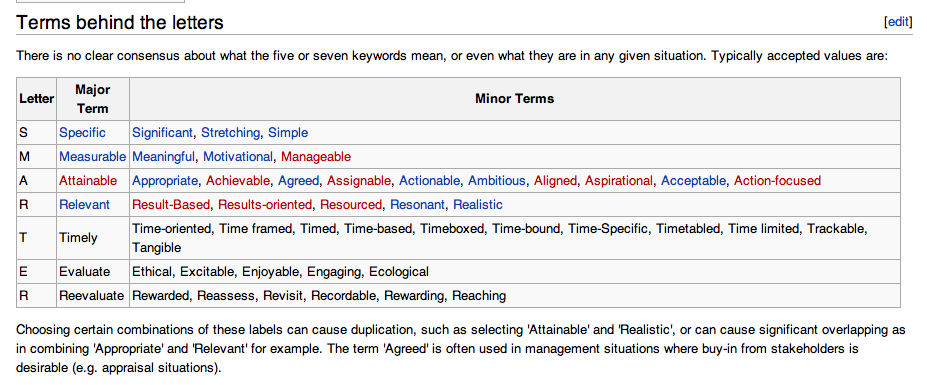“If one advances confidently in the direction of his dreams, and endeavors to lead a life which they have imagined, they will meet with a success unexpected in common hours.” ~Henry David Thoreau
By: Martin Grunburg
WARNING! What you are about to read challenges existing goal setting and achievement theory and, for whatever reason, has ruffled a few feathers. Please proceed with caution. ; )
We all know that repetition is the key to learning, whether you’ve come to realize this through your own education or teaching experiences. This is essentially the magic of HABIT in goal achievement. Most of all, by aligning positive, constructive habits with your goals, you are utilizing a powerful tool to make your dreams come true.
The good news is YOU can help me (please) share this message. Whether you’re a regular reader of The Habit Factor® blog or just a curious newcomer, I’m hopeful you will soon feel as impassioned as I am about sharing the important role HABIT has in goal achievement.
But, first…
The “Challenge” with SMART Goals — Who Knew?
Unfortunately, the large majority of business coaches, executive coaches, trainers and the like — and anyone who pays attention to this “success” stuff — continues to use a goal methodology that was developed in 1981 (see Wikipedia). While 1981 was a terrific year — and 37 years is a fantastic run — I would like to think that goal setting has evolved!
Invest 5 minutes with this post and you’ll never set goals the same way again.
So, What are SMART Goals anyway?
In the event you haven’t heard of SMART goals, here you go (this is a screen shot of Wikipedia):
Be More SMART-ER
Looks pretty good, right? With more than 33,000,000 Google results (do a search), SMART goals can’t be all bad! And, the answer is, the system isn’t all bad. But unfortunately, it’s not ALL good, either, and here’s why:
So, from my experience coaching and helping people with their goals, here are five “challenges” I have with SMART goals.
1) The To-Do List
After you go through all the necessary SMART criteria, guess what? You’re left with a To-Do List. “So what?” you say. “What’s wrong with a To-Do list?” Well, nothing really, if you can extricate your life’s to-do list from your daily chores, e.g., call Grandma, pick up cereal, make a dentist appointment, wash car, feed fish, etc. Furthermore, the To-Do List is ubiquitous, never-ending and always growing. So people go to bed at night and wonder, “Did I get any closer to my goal today?” The answer, of course, is unfortunately “NO.”
2) Enter: HABIT and Goal Achievement
The biggest challenge with SMART goals is its greatest oversight: SMART goals do NOT take into account HABIT. Most of all, there’s no mention of the conscious development of supportive, core behaviors (habits) to achieve your goal. So it’s astounding when you consider that everyone’s greatest tool for achievement is habit and yet habit hasn’t been offered in any goal achievement theory to date, let alone the most popular goal achievement methodology, SMART goals.
3) The Subconscious Mind
What “experts” in achievement and “success” coaches will tell you is that your subconscious mind has far more influence than your conscious mind when it comes to goal achievement. Now whether that is 10 times or 100 times more influence is up for debate.
However, what appears NOT to be up for debate is that the subconscious mind does indeed have the greatest influence when it comes to goal achievement. So, my friend, here is the question: Where do your habits reside? BINGO! In the subconscious mind!
Furthermore, here is another question: Does it make sense to follow a goal methodology that doesn’t take into account HABIT, which is a direct path to your subconscious mind?
4) SMART Goals: Criteria Gets Confused
See the above screen shot and you’ll notice there is no less than three terms behind each letter in the acronym. So what is being regurgitated by coaches and want-to-be coaches, unfortunately, is often incorrect and/or muddied.
5) There Is a “Simpler” Way
“Simplicity is the ultimate sophistication.” ~Leonardo da Vinci
“Everything should be made as simple as possible but not simpler.” ~Einstein.
Combined, these two edicts from true geniuses have greatly influenced my creative efforts. Consider the simplicity and, you might even say, elegance (see Dr. Evil’s pinky) of simply tracking three to five core, related behaviors to achieve your goal. Exciting, isn’t it?
Bette Davis Eyes
Seems like a lot has changed in 30-plus years!
For a bit of a time-warp — and some perspective — here are the Billboard Top songs from 1981:
Position Artist Song Title
1 Kim Carnes Bette Davis Eyes
2 Diana Ross and Lionel Richie Endless Love
She’s got Bette Davis Eyes!? Awesome.
Most of all, until next time, keep on tracking! Develop those core, essential habits to achieve your goals. And yes: There’s an app for that. Thank you for your continued support and feel free to email me anytime: mg AT thehabitfactor DOT com.
***
Finally, a bonus: For your reading pleasure, here is an excerpt from a publicly available PDF from Edwin A. Locke and Gary P. Latham on Goal Setting theory: I love the final paragraph/specifically the last sentence. Enjoy!
[Note: The original version of this post was first published on 8/21/2012]


